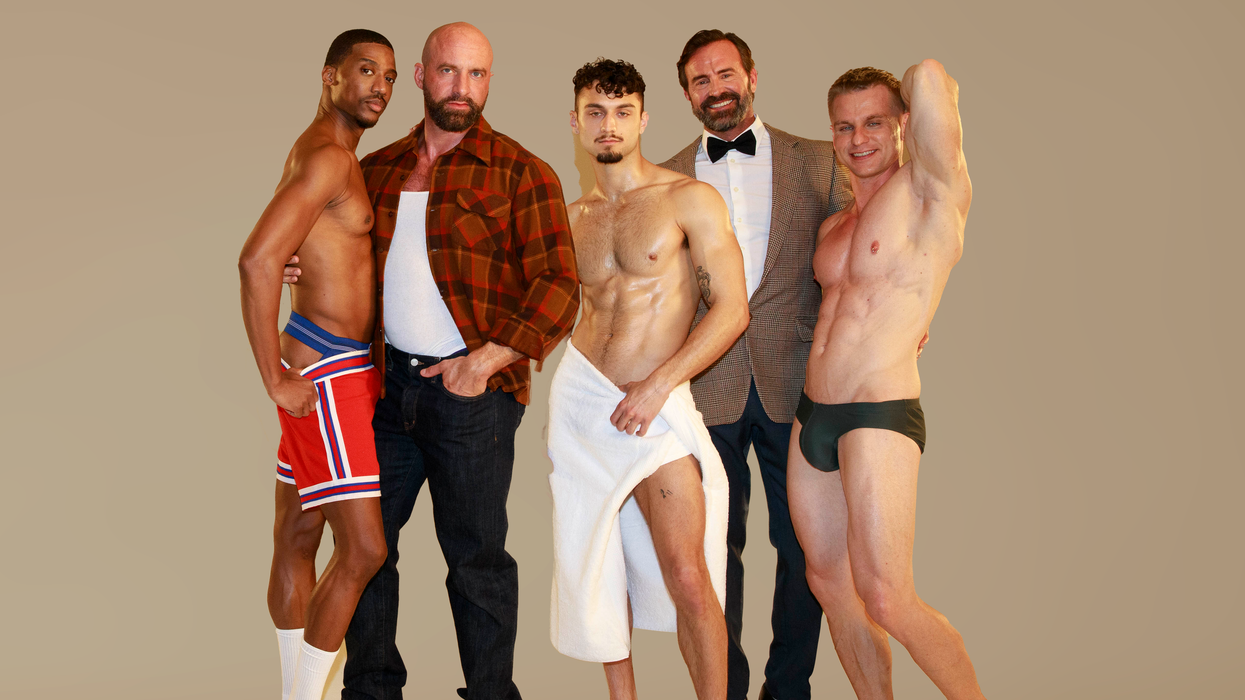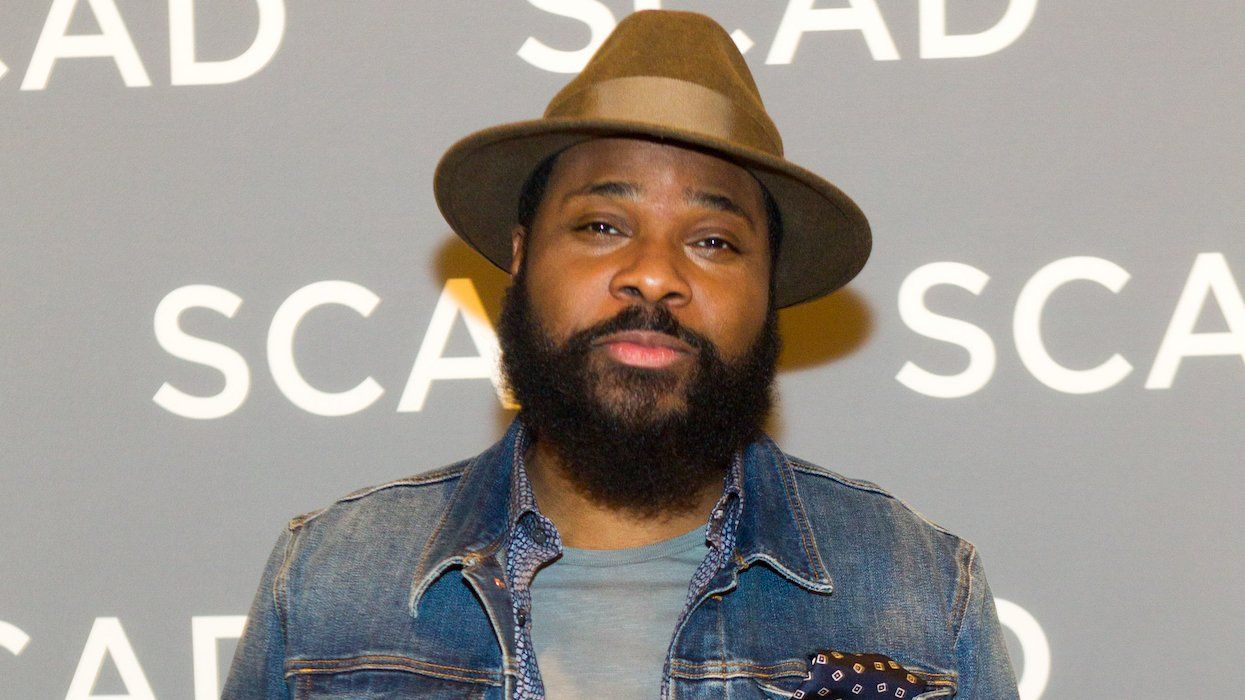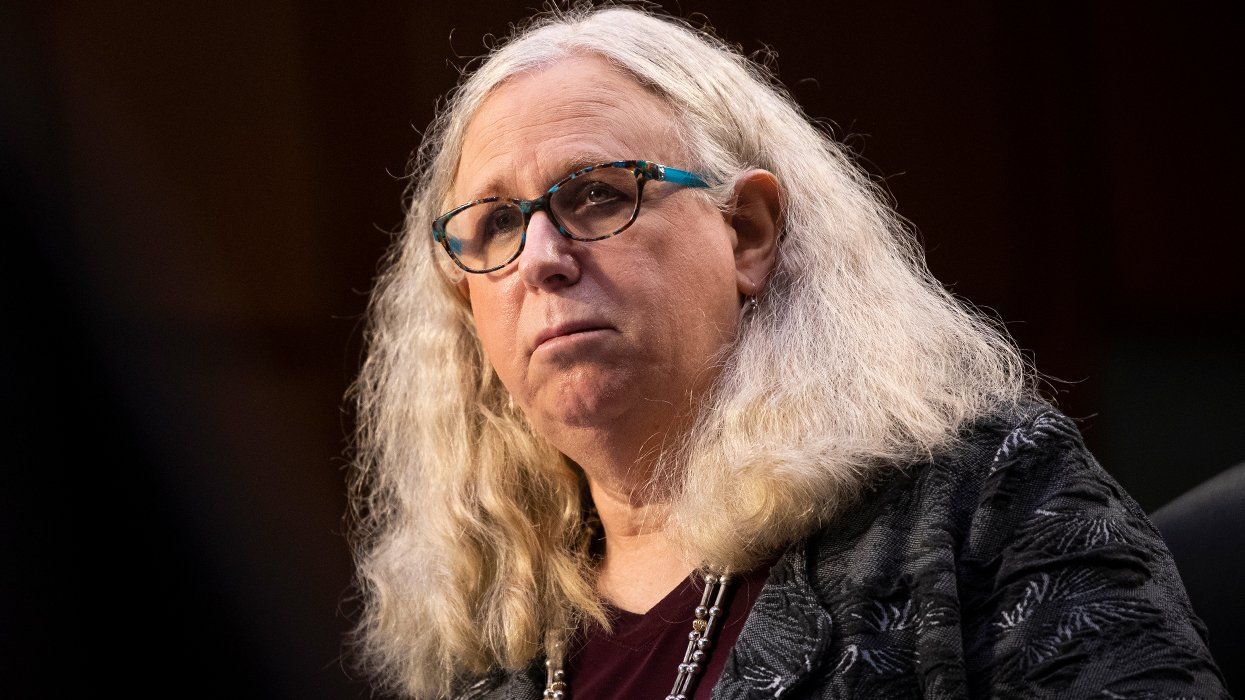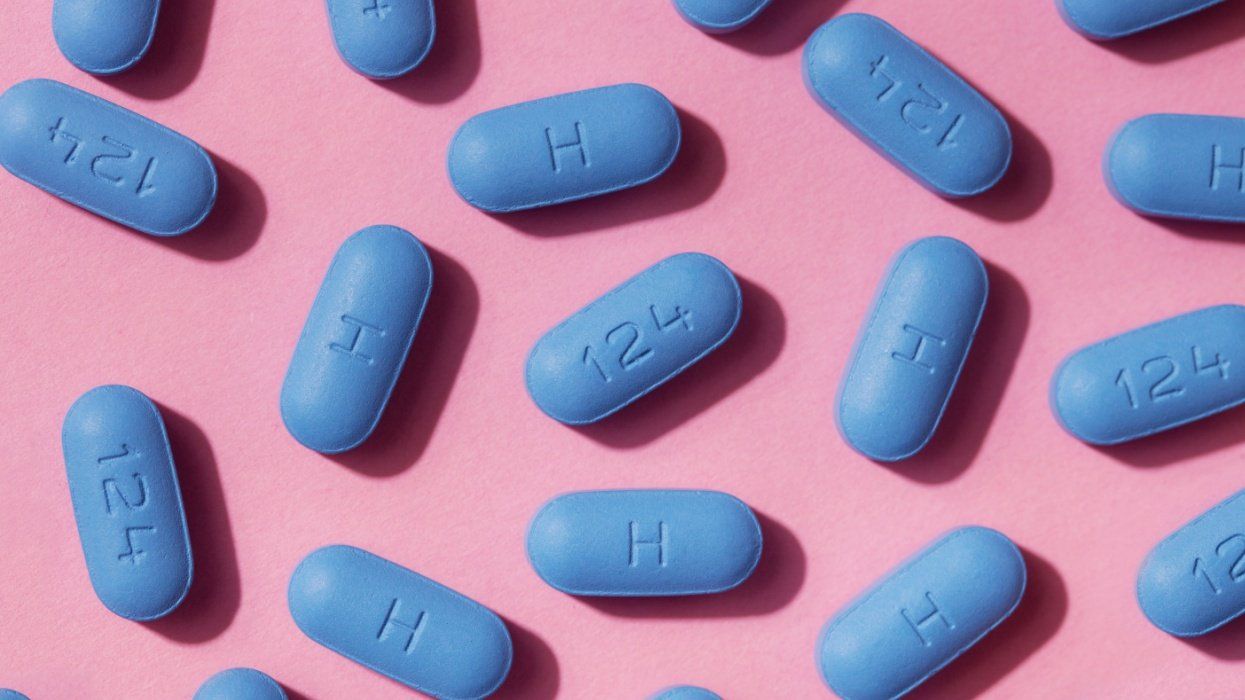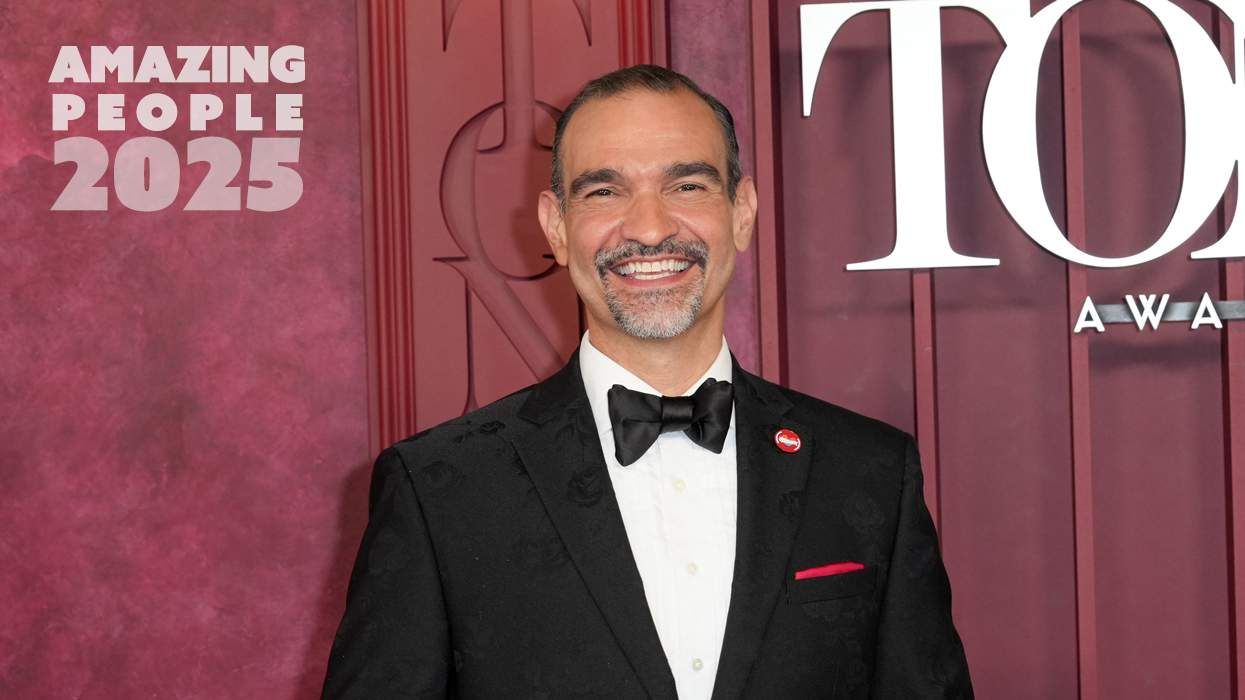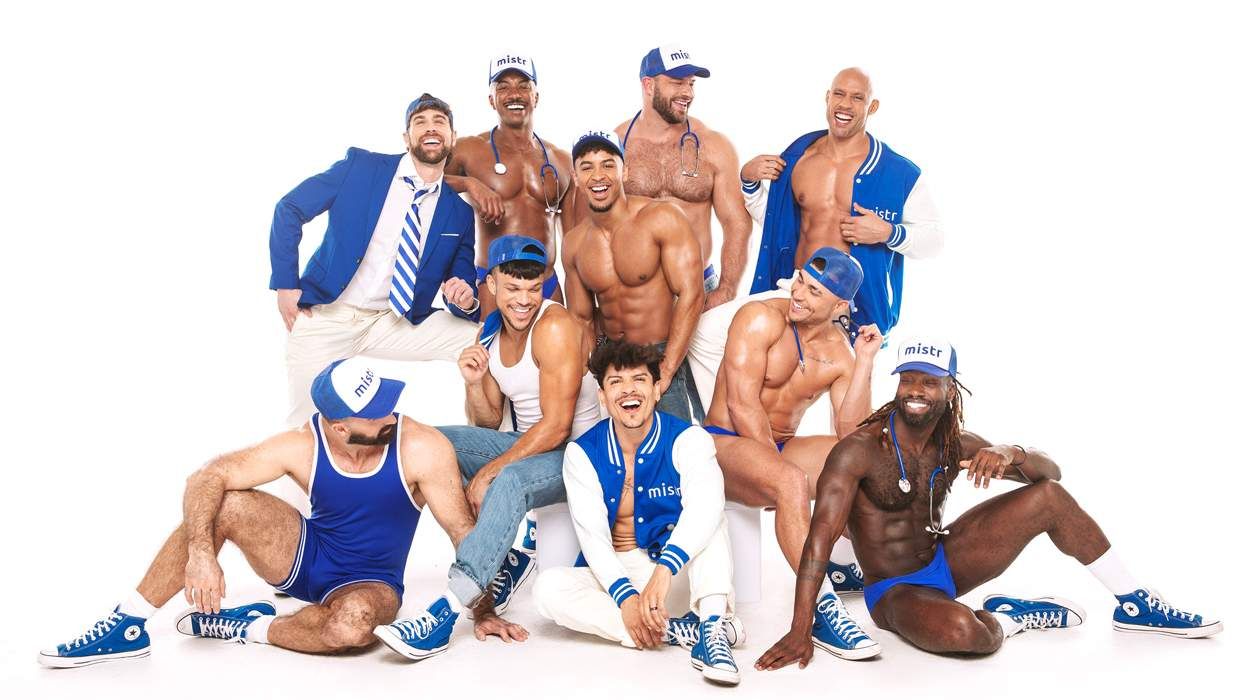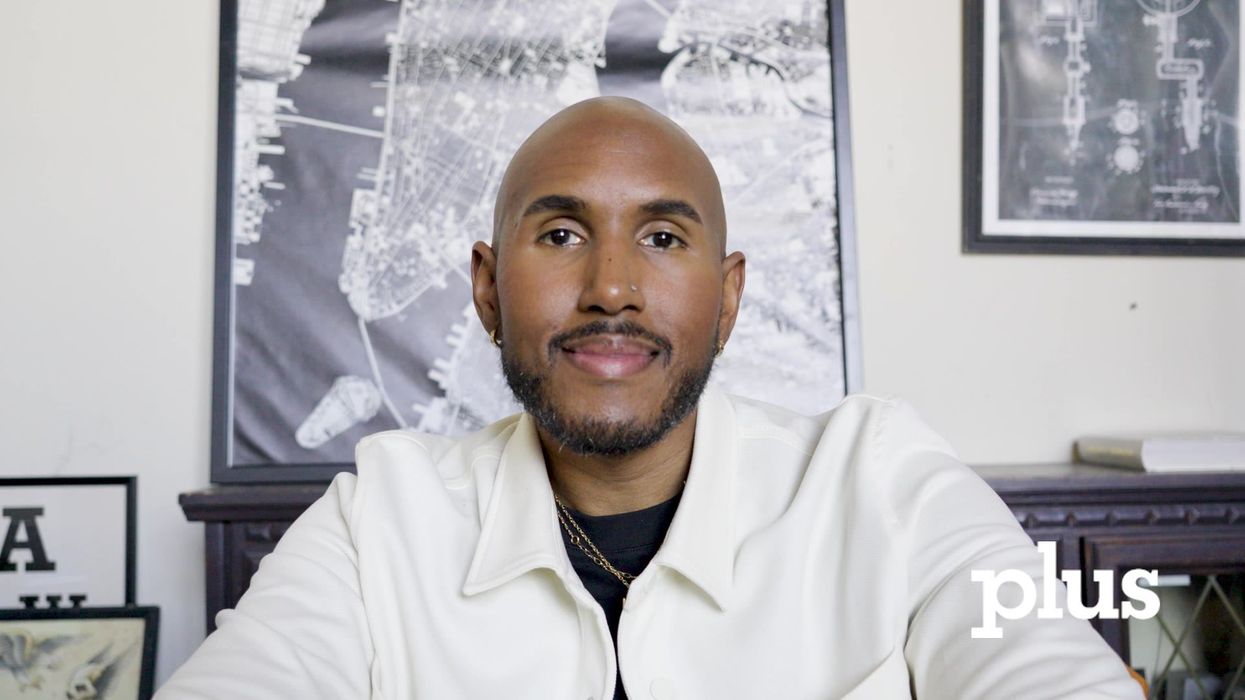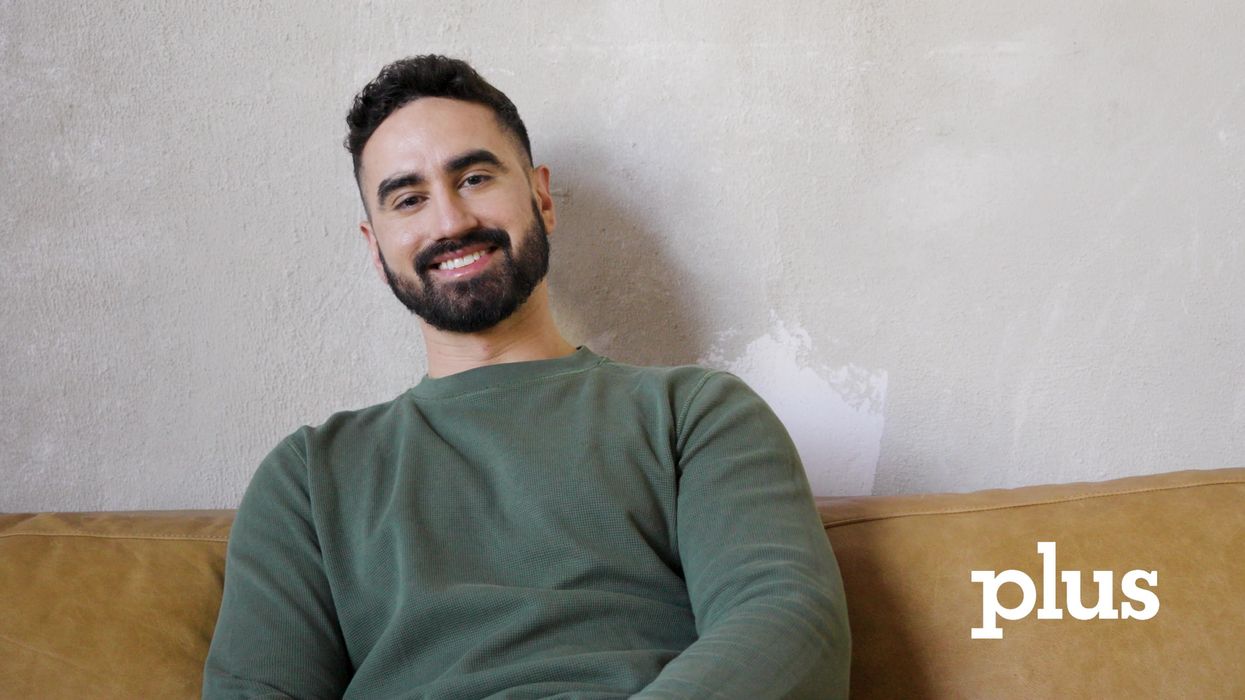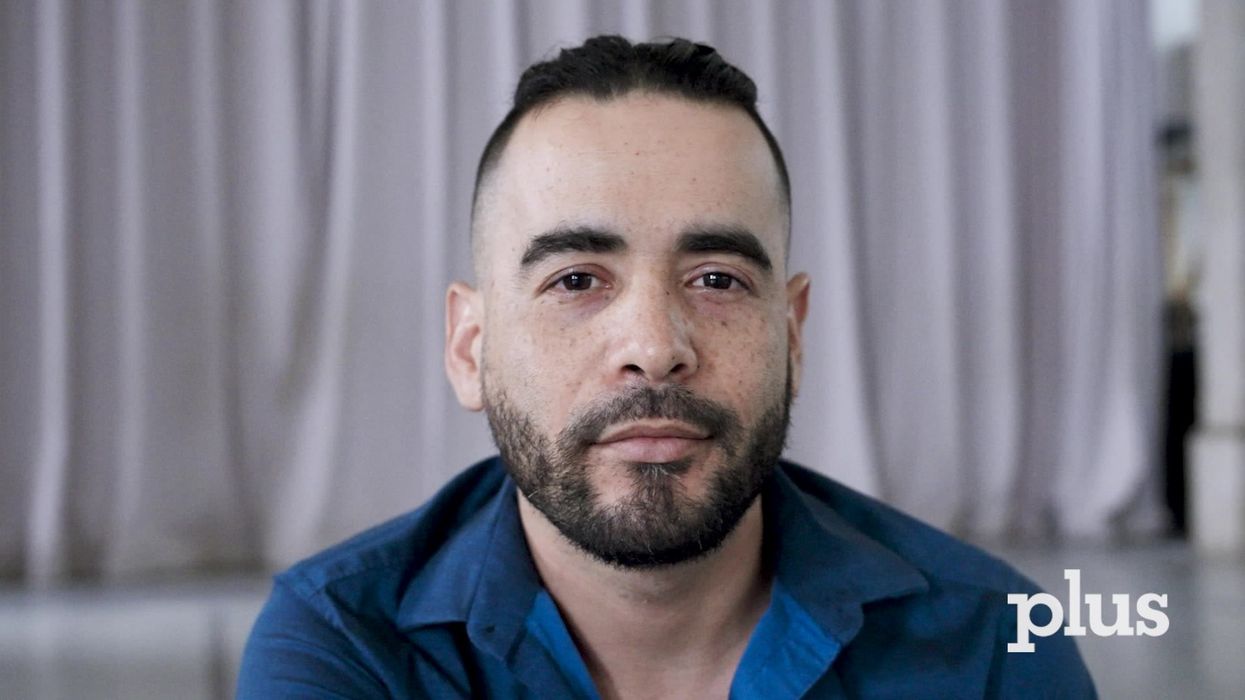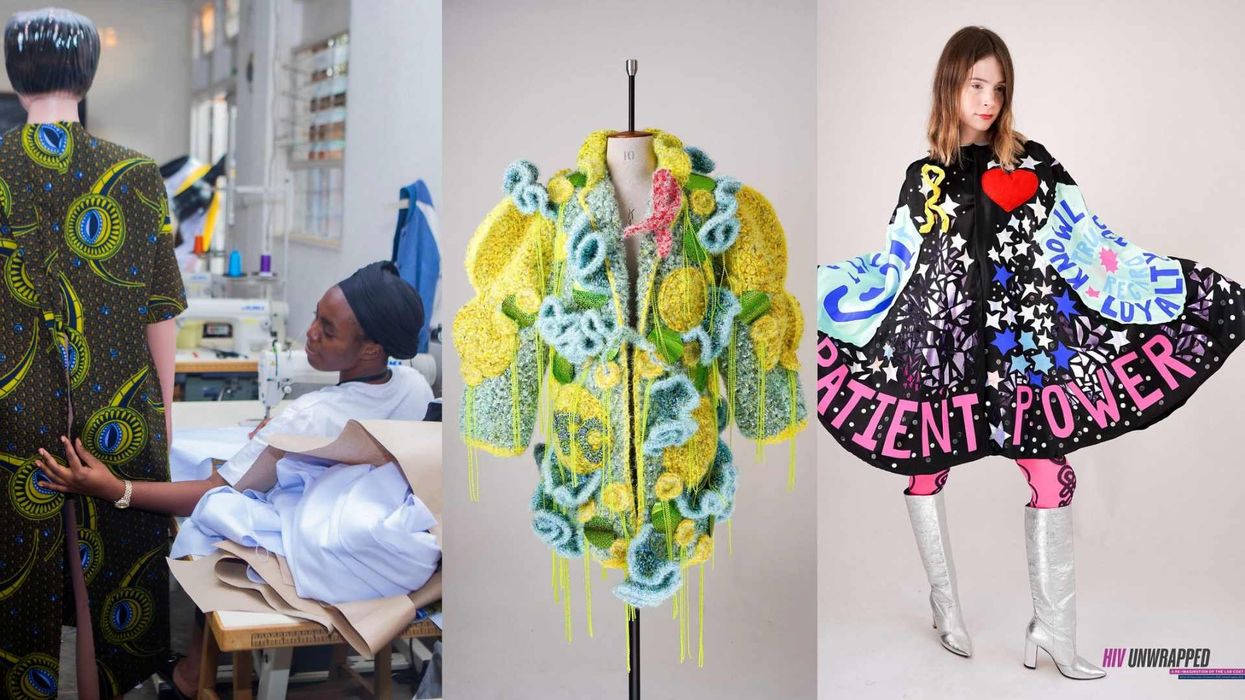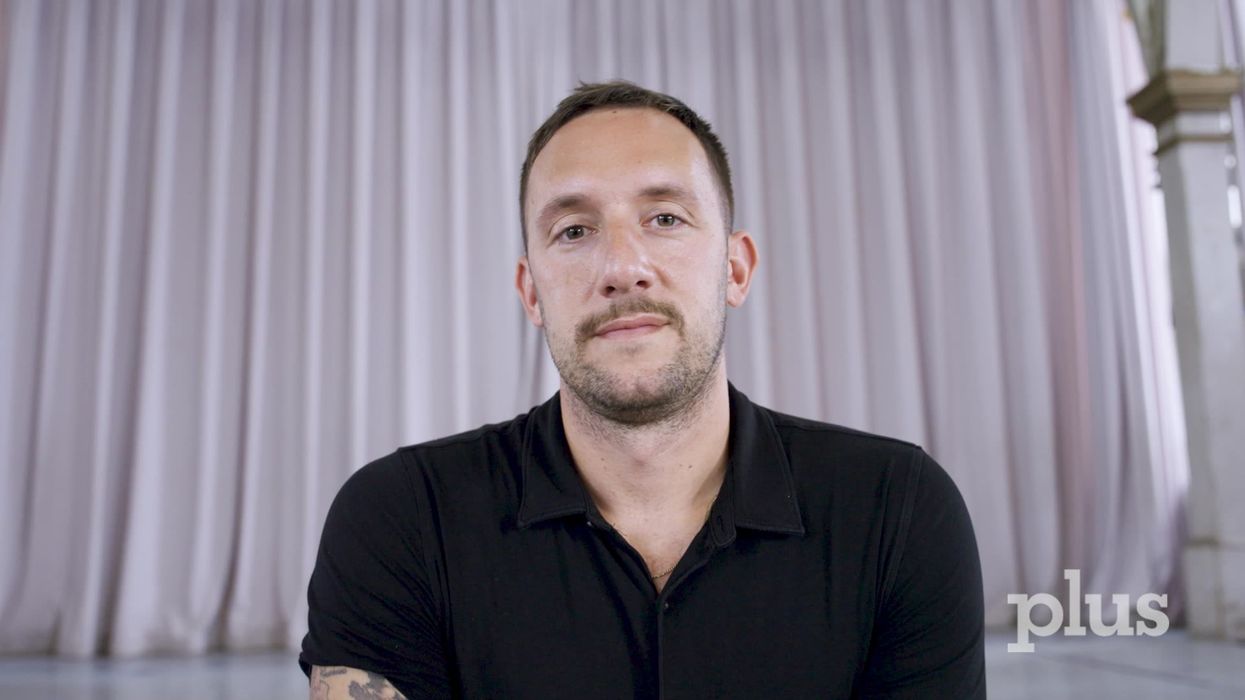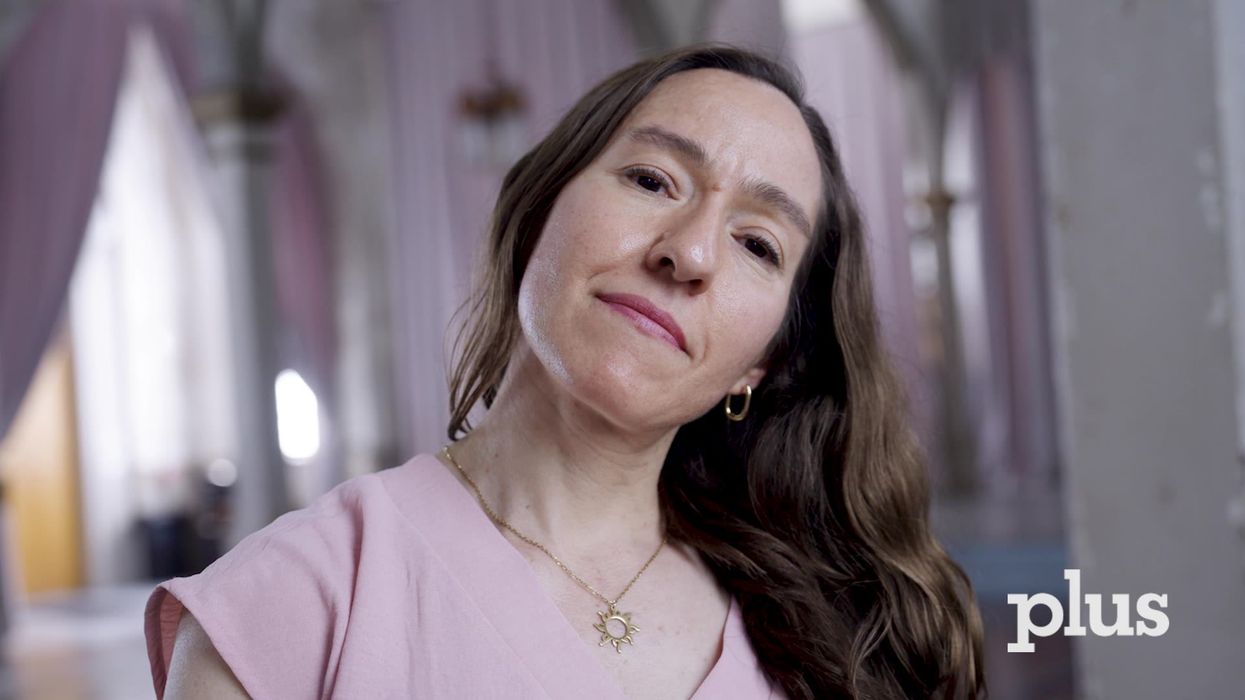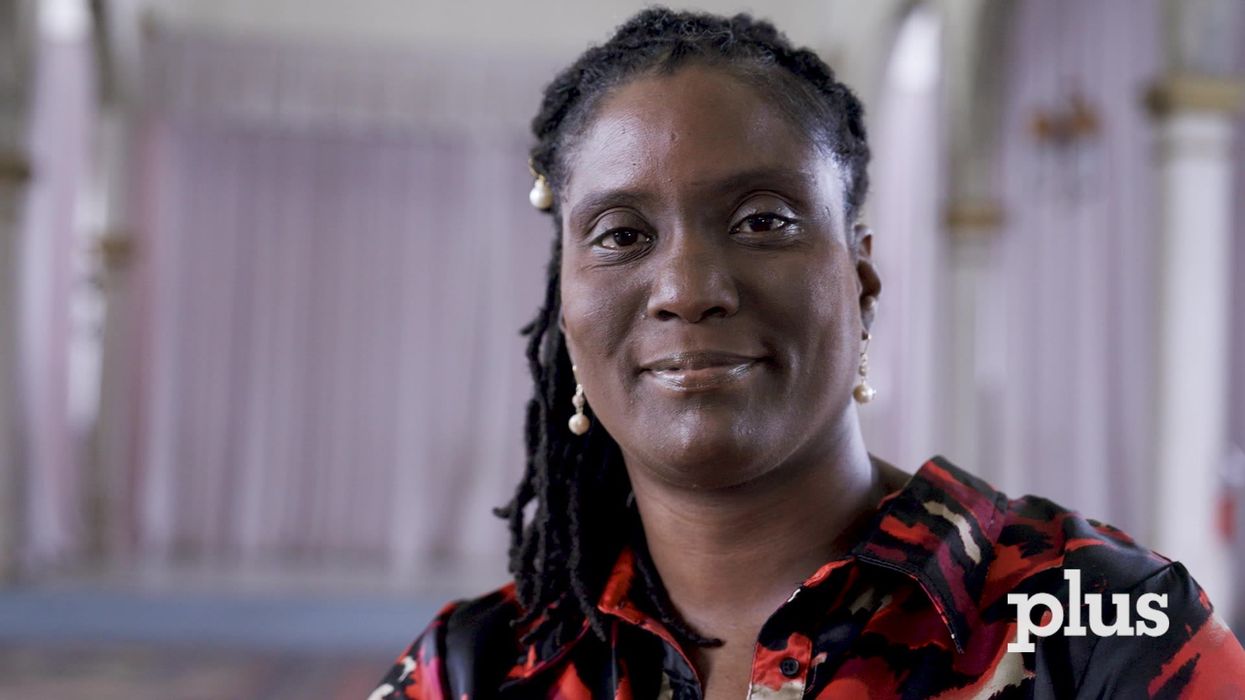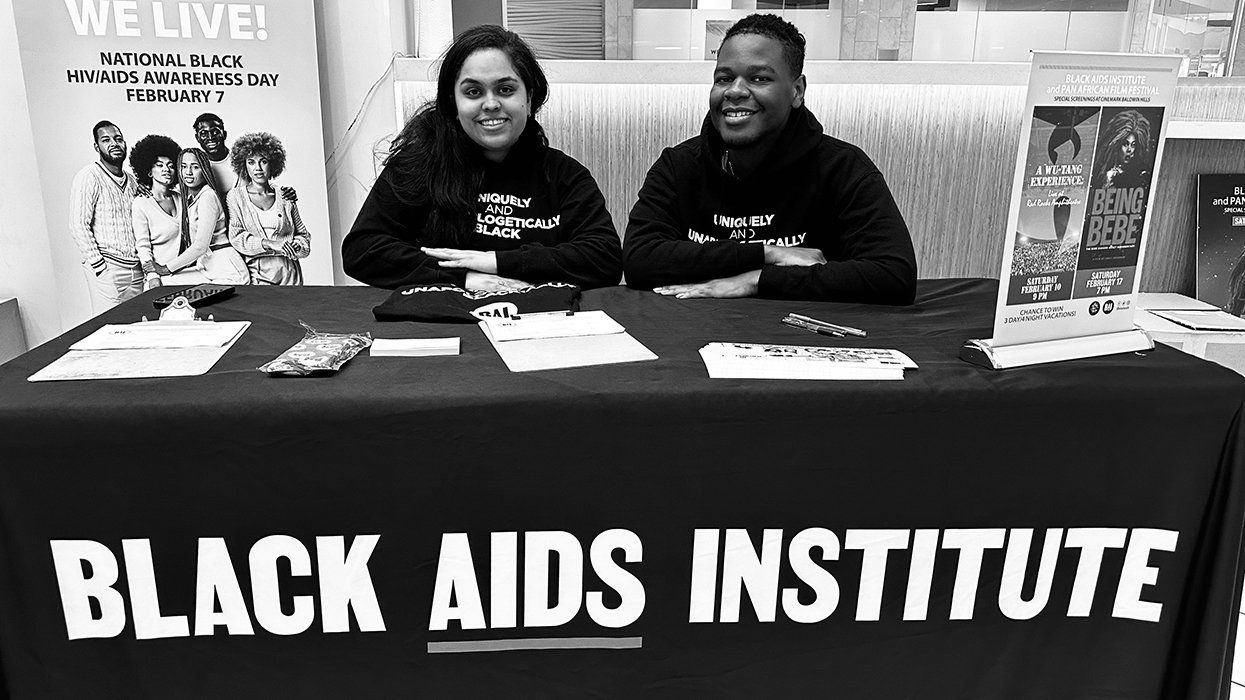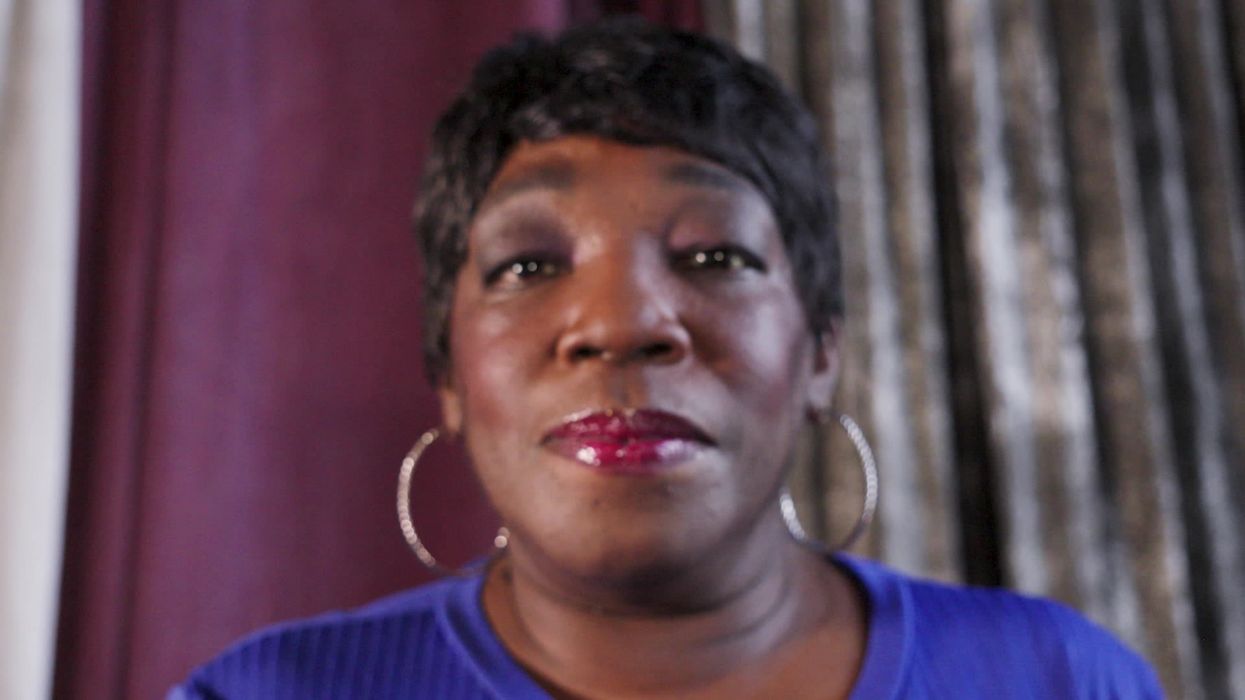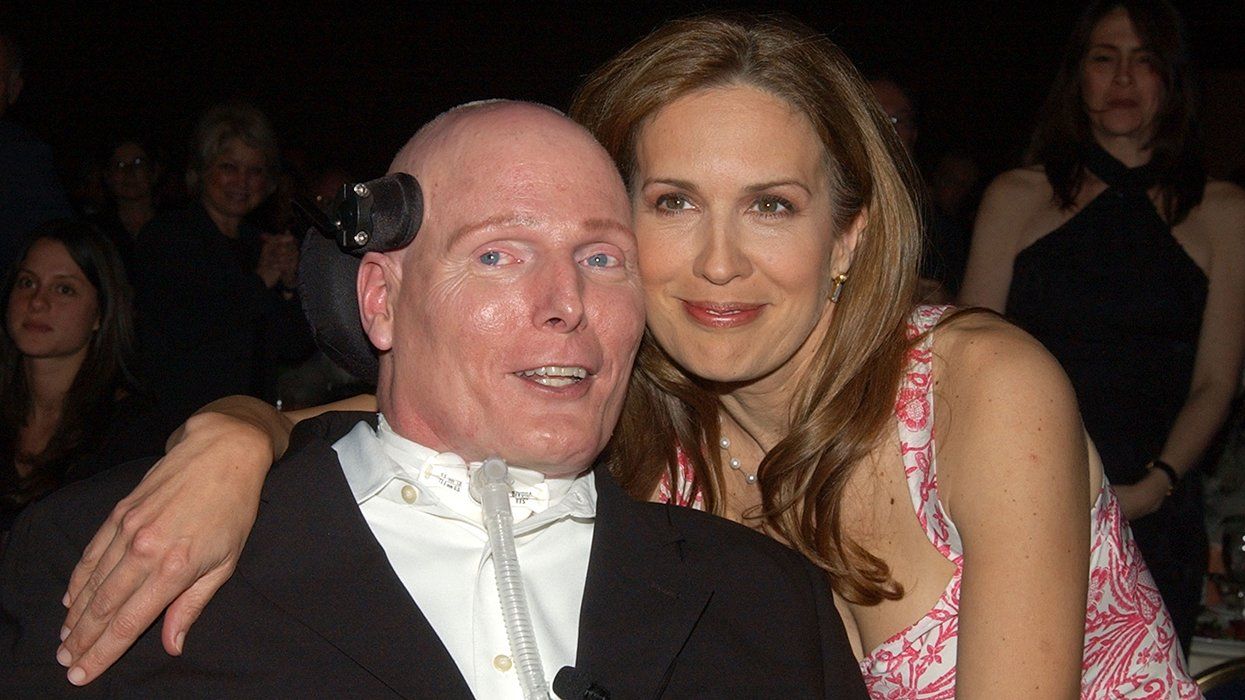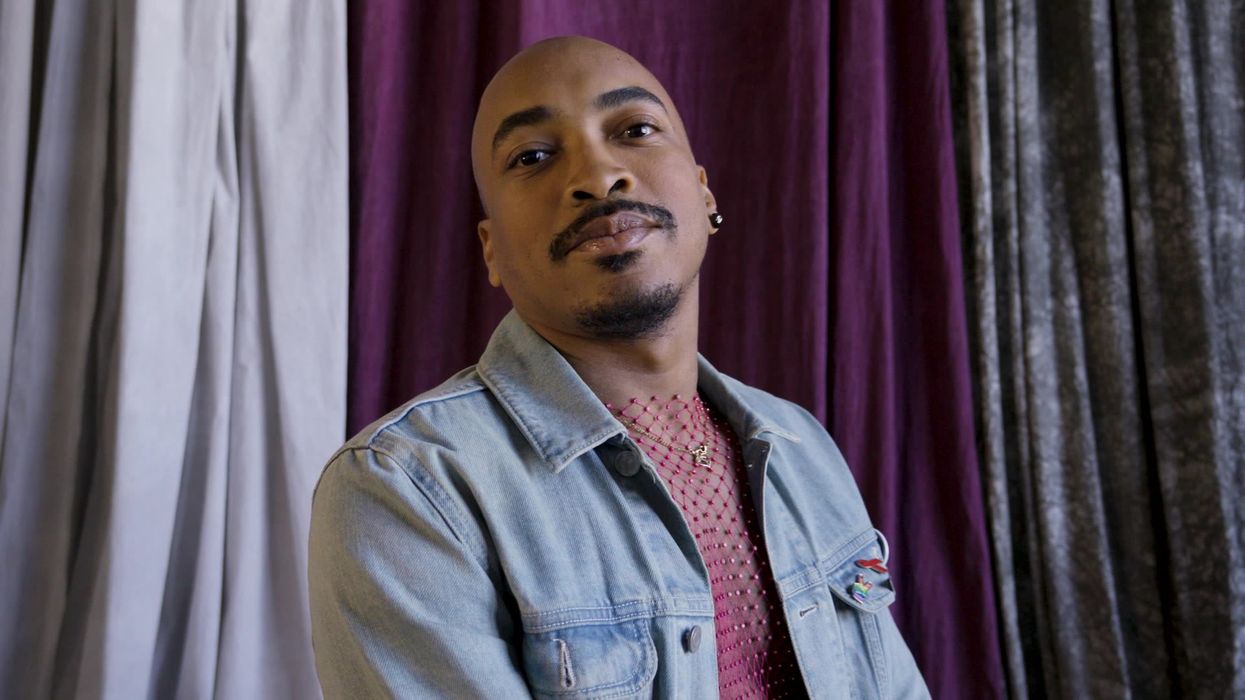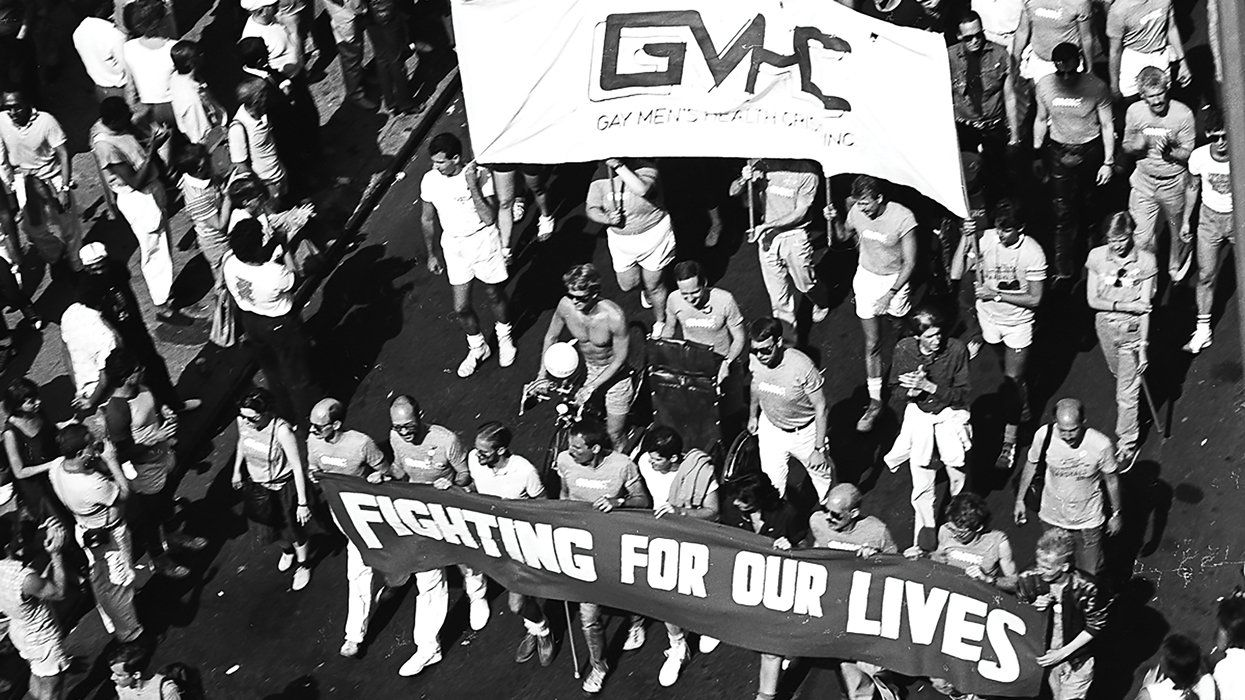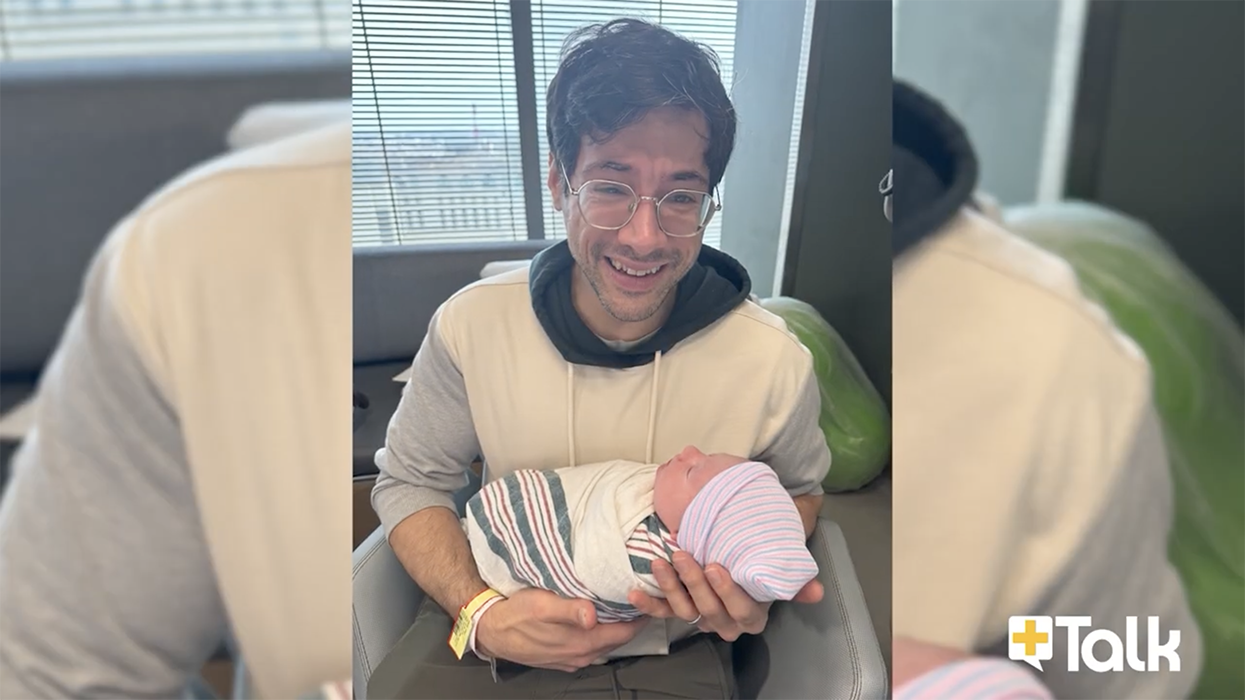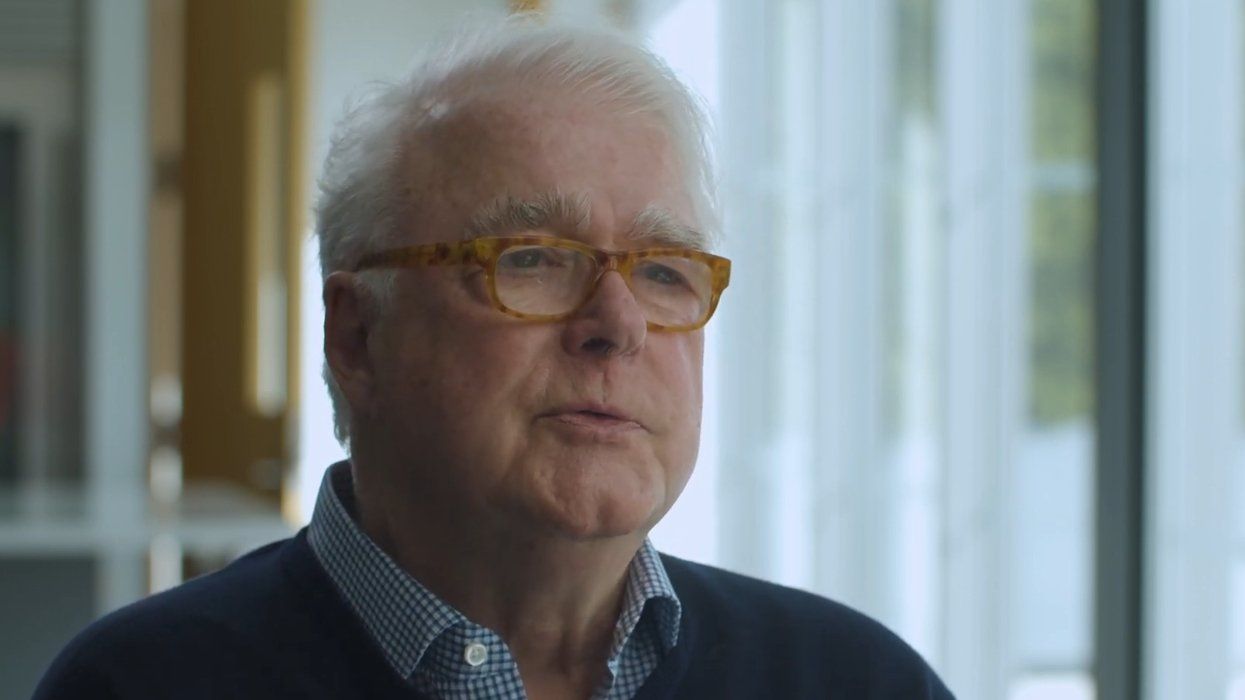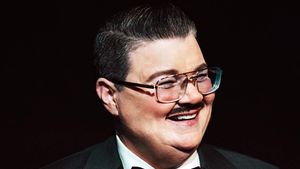 Above: Conrad Ricamora
Above: Conrad Ricamora
Two days before the filming of the finale of How to Get Away With Murder, a legal drama that shows how a murder upends the lives of a law professor (Viola Davis) and her students, actor Conrad Ricamora was approached by his cast mate Jack Falahee with some troubling news.
“Did you hear? Did you hear?” Falahee asked Ricamora.
“No, what?” he responded.
“You tested positive,” Falahee said.
Falahee, who plays gay character Connor Walsh, was referring to Ricamora’s character, Oliver, who is Connor’s romantic interest on the hit ABC drama. The show regularly features shocking surprise twists that involve murder, sex, intrigue, and scandal.
But this twist floored Ricamora in a way the others hadn’t.
“I just stood there, stunned, staring off into space…like I had just found out a real person tested positive, and going though all the grief and denial,” he said.
It was a reaction shared by many of the 9 million viewers of Murder’s season finale, who came to adore Oliver for being, as Ricamora describes him, “an open, honest, and levelheaded” person in a show full of schemers and backstabbers.
Oliver had been the one to encourage Connor, who often engaged in risky sex, to get tested for HIV. When Connor’s results came back negative and Oliver tested HIV-positive, the scales of justice — and the audience’s preconceptions about who has HIV — were turned upside down.
“People have demanded it be rewritten,” Ricamora says of viewers’ responses to the news. “Some people are really, really heartbroken and sad. People come up to me and tell me all the time, ‘Oh! I cried so much when I found out!’ Just a lot of sad people, because, I guess, everybody loves Oliver.”
But the cloud has a silver lining. With the stroke of a pen from the writers’ room, Conrad became the first major HIV-positive character to appear on a U.S. broadcast network TV series since a gay character, Saul Holden, tested positive on ABC’s Brothers & Sisters. That series ended in 2011.
For years, Hollywood has avoided telling HIV-related stories — or even just including poz characters — like, well, the plague HIV once was. This lack of storylines does not reflect reality. The Centers for Disease Control and Prevention estimates that more than 1.2 million Americans are living with HIV, and more than 35 million are living with the virus worldwide, reports the World Health Organization.
Oliver’s positive test has helped break this small-screen dry spell. Though the character’s future remains uncertain, his presence on such a popular prime-time TV show could very well save lives by sparking conversation and encouraging others to get tested and seek treatment.
“It’s a huge honor to be able to bring this back into the consciousness,” Ricamora says. “I remember growing up in the ’90s, it was such a big educational topic.… [But] in the last couple of years, it’s slid out of the consciousness of mainstream America.”
He adds that it’s “good to remember that this still can happen — it still does happen — and just to be aware and let people know that safe sex still matters.”
Before How to Get Away With Murder revealed Oliver’s positive status, the only other television show to include an HIV-positive character in 2015 was HBO’s Looking, a little-seen but well-reviewed cable series following the lives of gay men in San Francisco. Because the city has many residents living long, healthy lives with HIV, it’d be a surprise if there wasn’t at least one character that was positive.
 Above: Daniel Franzese
Above: Daniel Franzese
In telling HIV-related stories, other TV writers and showrunners might benefit by looking to Looking for an example of a character that defies the stereotypes and stigma associated with people who are living with HIV in the U.S. today.
Throughout its second season, Daniel Franzese (already popular from his influential role in Mean Girls) portrayed Eddie, a character who works with queer and trans youth. He is HIV-positive and also “body-positive,” as Franzese puts it. He also loves the fact that neither of those features defines his character, though.
Defying stereotypes, Eddie is sexy and healthy, has admirable self-esteem — and he is romantically pursued on the show by an HIV-negative character, a guy who begins a regimen of PrEP, the daily dose of a pill that can reduce the risk of HIV infection by up to 99 percent, so that the pair can have sex without worry about transmission.
“Eddie’s not sick,” Franzese says. “There are no sad things that have to do with Eddie. There are problematic things that he has to deal with in his life, but most of them are social. There’s not going to be a ‘very special episode’ about Eddie. I found that to be so progressive.”
Another person who was thrilled by the character is Franzese’s real-life best friend, Ryan. In a situation similar to Eddie’s, Ryan found out he had HIV after his (now former) partner cheated on him. And like Franzese, he was frustrated that his experience was never represented in media. Major recent movies that dealt with HIV, like Dallas Buyers Club and HBO’s The Normal Heart, were period pieces set during the height of the AIDS crisis, when a positive diagnosis meant a death sentence. Today, people living with HIV are largely having the same types of lives as those around them, except with some extra medication and doctor’s appointments, so many advocates ask, Why can’t TV producers simply give more characters HIV without it needing to be a feature of a shocking bombshell episode?
Franzese remembers Ryan’s excitement when hearing about Eddie, a character who is healthy and thriving in the present day, who is never shown as a victim. “I’ve never seen that before,” Ryan told Franzese.
“It’s really cool to see Daniel playing a character like Eddie,” Ryan later told Plus. “As someone who is living with HIV, it’s refreshing to see that Hollywood is beginning to show characters who are HIV-positive and depicting them in a healthy way.”
 In fact, when Looking tackled PrEP, or pre-exposure prophylaxis, it did so without the usual pearl-clutching, eyebrow-raising “special episode” story arcs we’ve seen on TV. “The brief conversation that we have in the Halloween episode happens in a way that I’ve heard PrEP come up amongst my friends,” Franzese says, “and whenever I’ve heard it come up in public amongst people who are discussing it: just a matter-of-fact way, not too preachy. I really like the way that it’s handled.”
In fact, when Looking tackled PrEP, or pre-exposure prophylaxis, it did so without the usual pearl-clutching, eyebrow-raising “special episode” story arcs we’ve seen on TV. “The brief conversation that we have in the Halloween episode happens in a way that I’ve heard PrEP come up amongst my friends,” Franzese says, “and whenever I’ve heard it come up in public amongst people who are discussing it: just a matter-of-fact way, not too preachy. I really like the way that it’s handled.”
He should be proud; Looking made TV history as the first scripted show to talk about PrEP, an HIV prevention method that experts say could cut worldwide HIV incidence by 25 percent and U.S. incidence even more.
Although he is pleased with the way Looking has represented HIV-positive gay men, Franzese would like to see Hollywood tell stories of characters living with HIV who are not gay. Men who have sex with men are indeed an at-risk group in the United States — people in this demographic accounted for 63 percent of new infections in 2010, according to the CDC. But other groups are also disproportionately affected, and their representations are nearly absent from media. For example, according to the CDC, the HIV rate among African-American women is 20 times that of white women — and black women’s stories are ones that Franzese says he would “love to see.” He notes, “All groups would like to see themselves represented on-screen,” stressing the need “to help educate the world about how diverse we all are.”
Sadly, the smartest HIV portrayal on TV is going away. HBO has not picked up Looking for a third season, though a movie is currently in the works as a final sendoff for fans. (Since Oliver finds out he has HIV in the season finale of How to Get Away With Murder, it remains to be seen how the character will be handled. But there will be a chance to find out: The Shonda Rhimes drama was one of the highest-rated new series of the past season, and ABC will bring it back for season 2 this fall.
And while Franzese is out of a job, he’s not leaving HIV work behind. After talks with his friend Quinn Tivey, an HIV activist and Elizabeth’s Taylor’s grandson, Franzese joined the Elizabeth Taylor AIDS Foundation as an ambassador, using his platform to increase dialogue on issues related to HIV and AIDS. He also works with GLAAD, a national organization that promotes positive representations of LGBT people in the media, in examining how television and film can raise awareness of the virus and its prevention.
“There’s a direct correlation between representation of a story in media and people knowing about it,” Franzese says. “If it’s not being seen, it’s not being talked about, and it’s not being learned.”
Earlier this year, GLAAD announced a partnership with the Elizabeth Taylor AIDS Foundation and AIDS United on what would have been Taylor’s 83rd birthday in order to renew the public conversation on HIV. In addition to releasing a style guide for journalists on how to cover current issues on HIV (on which Plus editors consulted), the three organizations, alongside spokespeople like Franzese, are calling on Hollywood to create more characters and storylines about those with HIV.
“It’s time to put our red ribbons back on,” GLAAD president and CEO Sarah Kate Ellis said at the time. “Just as we advocated for accurate coverage of HIV and AIDS in the 1980s, it is equally important today that we ensure fair, accurate, and inclusive stories in the media to build understanding that leads to better prevention.”
 In terms of prevention, both Franzese, 37, and Ricamora, 36, are gay, HIV-negative men who are leading by example. Both men have set rules about their sexual health that they readily offer as guidelines for others.
In terms of prevention, both Franzese, 37, and Ricamora, 36, are gay, HIV-negative men who are leading by example. Both men have set rules about their sexual health that they readily offer as guidelines for others.
“I would say start using condoms immediately when you start having sex,” Franzese offers as advice to LGBT youth. “That way, it’s never an issue. And stay healthy and be tested and be aware.” It’s what he would tell the character he is most famous for, Damien in Mean Girls.
“Always use protection,” Ricamora stresses. “Always talk about your sexual history with the person that you’re with. And always know what your status is.”
Conversations about sex may not be easy. Particularly in Hollywood, sex, if it is portrayed at all, is depicted in the high heat of the moment and not the less sexy aftermath. But Ricamora says the U.S. and the media need to overcome their hang-ups in order to have conversations that will help save lives.
“People are scared to talk about sex in general, especially in this country,” Ricamora says. “C’mon, people are having sex! Why not make it something that’s comfortable to talk about…or be uncomfortable, but still talk about it? Because there are consequences — whether it’s getting pregnant or whether it’s getting an STD — that can go along with sex that can either be prevented or planned for.”
He adds, “If sex is continually regarded as a taboo in this country, then that means more people are going to make less smart decisions.”
Franzese agrees. Conversations, which can be encouraged and sparked by the media, lead to education. Education leads to testing. And testing leads to treatment and an end to an epidemic that has plagued the world for far too long.
“We have the tools out there currently right now to end new HIV infections by 96 percent,” he says. “They exist. But the first step is knowing your status and making sure that we’re able to stop it. It’s time that we make this new commitment to stopping HIV and AIDS once and for all.”
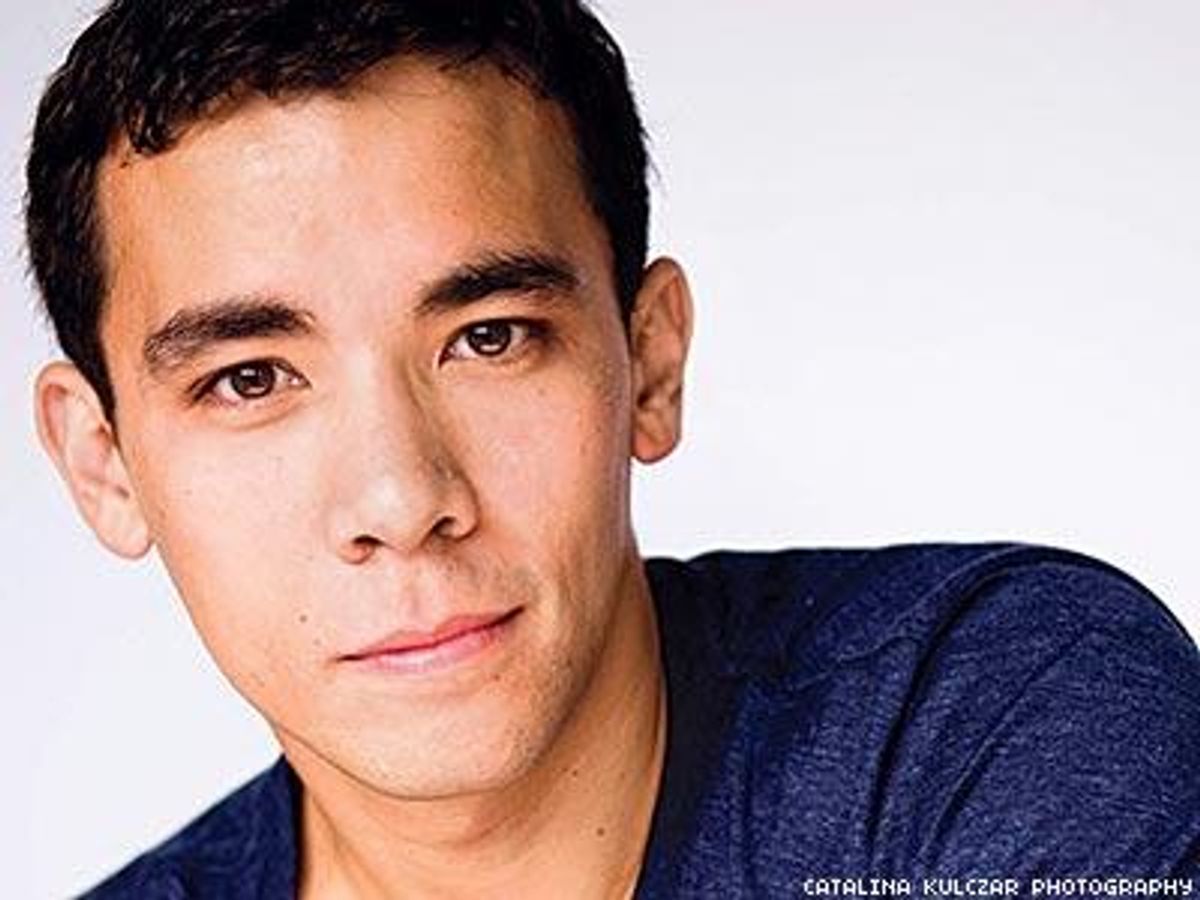
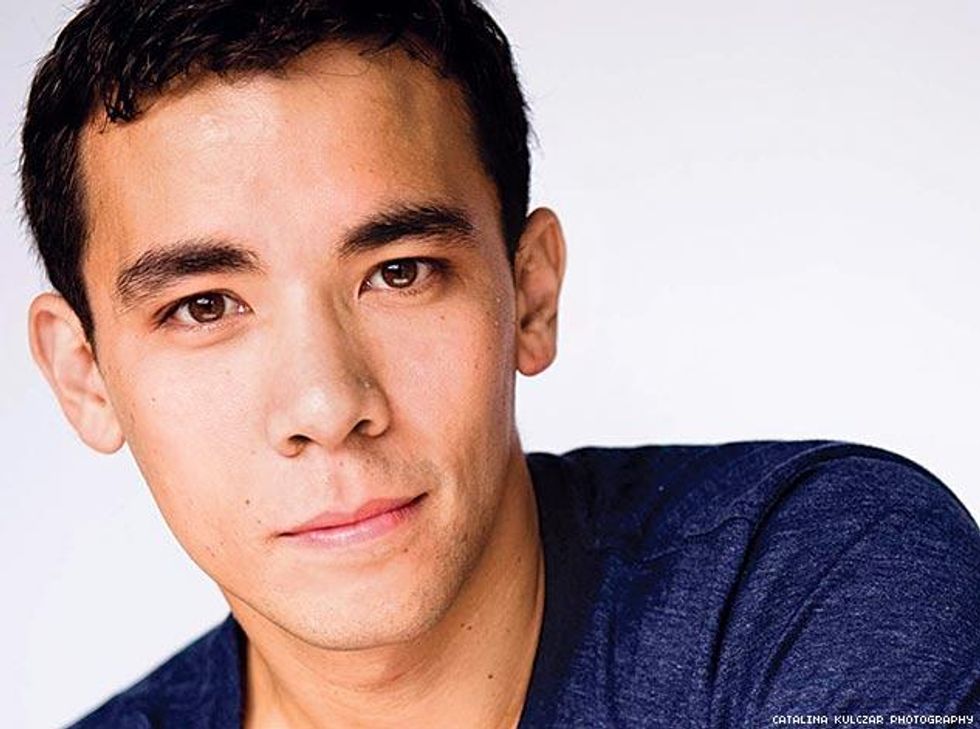 Above: Conrad Ricamora
Above: Conrad Ricamora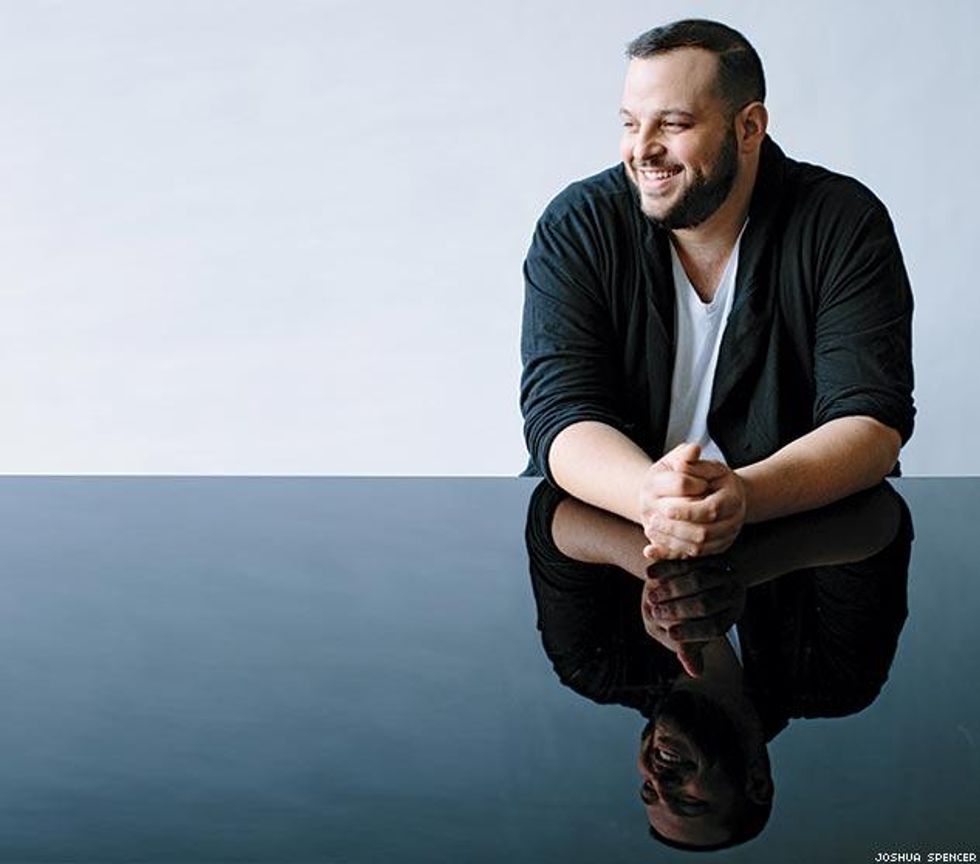 Above: Daniel Franzese
Above: Daniel Franzese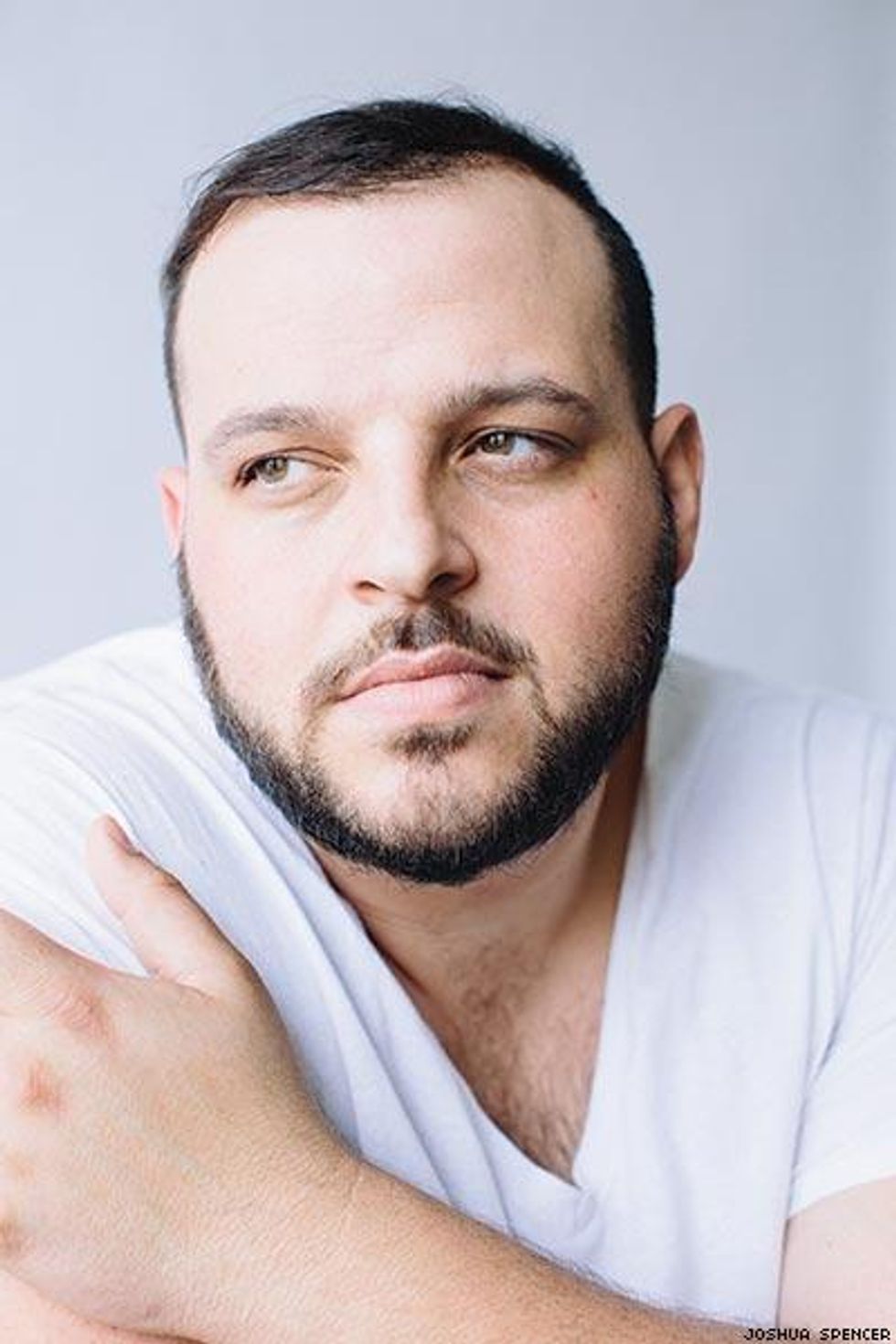 In fact, when Looking tackled PrEP, or pre-exposure prophylaxis, it did so without the usual pearl-clutching, eyebrow-raising “special episode” story arcs we’ve seen on TV. “The brief conversation that we have in the Halloween episode happens in a way that I’ve heard PrEP come up amongst my friends,” Franzese says, “and whenever I’ve heard it come up in public amongst people who are discussing it: just a matter-of-fact way, not too preachy. I really like the way that it’s handled.”
In fact, when Looking tackled PrEP, or pre-exposure prophylaxis, it did so without the usual pearl-clutching, eyebrow-raising “special episode” story arcs we’ve seen on TV. “The brief conversation that we have in the Halloween episode happens in a way that I’ve heard PrEP come up amongst my friends,” Franzese says, “and whenever I’ve heard it come up in public amongst people who are discussing it: just a matter-of-fact way, not too preachy. I really like the way that it’s handled.”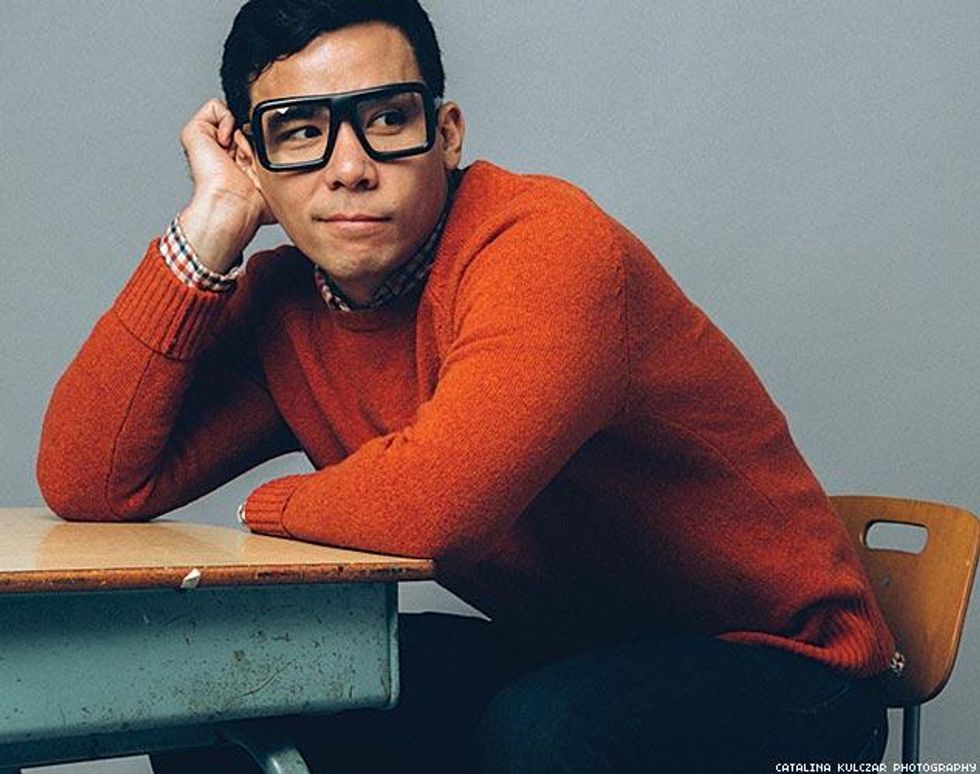 In terms of prevention, both Franzese, 37, and Ricamora, 36, are gay, HIV-negative men who are leading by example. Both men have set rules about their sexual health that they readily offer as guidelines for others.
In terms of prevention, both Franzese, 37, and Ricamora, 36, are gay, HIV-negative men who are leading by example. Both men have set rules about their sexual health that they readily offer as guidelines for others.

